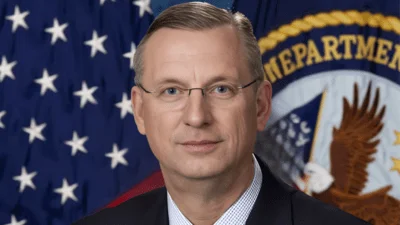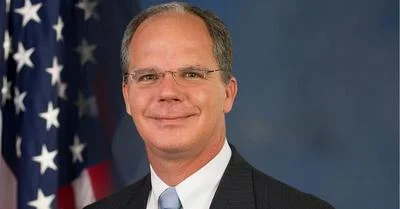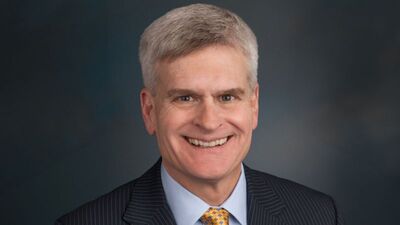Dear Director Redfield and Assistant Secretary Giroir:
We write today to understand what actions the Centers for Disease Control and Prevention (CDC) and the National Vaccine Program Office (NVPO) within the Office of the Assistant Secretary for Health are taking to boost vaccination rates in the U.S., including to address vaccine hesitancy, which the World Health Organization recently identified as a top health threat for 2019.[1] As Washington and New York each respond to urgent measles outbreaks, we are also interested in the steps that CDC and NVPO are taking to address ongoing outbreaks exacerbated by low vaccination rates and to help the families and communities affected by this vaccine-preventable disease.[2]
In 2000, measles was officially eliminated in the U.S. - an important milestone and a testament to public health efforts and the highly effective measles vaccine. Unfortunately, leading up to these current outbreaks, states across the country have experienced an increase in the number of measles outbreaks in recent years, including Tennessee, California, Minnesota, and Ohio.
While still rare, these outbreaks signify a concerning trend. While vaccination rates in the U.S. continue to be generally high, pockets of unvaccinated people and decreasing vaccination rates, particularly in children, are concerning and of significant risk to public health. There is no question that vaccines are an unparalleled public health success; the routine vaccination of four million children born annually in the U.S. results in 42,000 lives saved and 20 million cases of disease prevented.[3] Vaccines save lives. If vaccine hesitancy persists - or even expands - it could seriously undermine these important advances. Public health experts estimate that due to the highly infectious nature of measles, up to 94 percent of a population should be vaccinated against measles to achieve herd immunity and prevent its spread.[4] The ongoing measles outbreaks are an important reminder of what can happen when vaccination rates fall below levels necessary to maintain herd immunity.
On Friday, Jan. 25, Washington Governor Jay Inslee declared a state of emergency in response to confirmed cases of measles in Clark and King Counties.[5] Since then, the number of confirmed cases has continued to rise, with the majority of cases presenting primarily in children under 10 years old and among those not vaccinated against measles.[6] The overall measles, mumps, and rubella (MMR) vaccine coverage among 19-35 month olds in Clark County is 69.7 percent[7], well below the national average of 91.1 percent.[8] In addition to the current Washington measles outbreak, public health officials in Brooklyn, New York, are responding to a measles outbreak within an under-vaccinated community.[9] Unfortunately, these current outbreaks follow 372 cases of measles across multiple states and the District of Columbia last year - the second highest number of cases confirmed since measles was eliminated from the U.S. in 2000.[10]
Many factors contribute to vaccine hesitancy, all of which demand attention from CDC and NVPO. These concurrent outbreaks underscore the growing influence of vaccine hesitancy, the variability of state laws regarding vaccination, and other challenges that contribute to decreasing vaccination rates. CDC and NVPO can play an important role in understanding the factors that may affect a state or county’s ability to achieve herd immunity and strengthen vaccination rates within communities.[11] While strong recommendations from health care providers play a critical role in vaccine uptake, the spread of misinformation, including unsubstantiated information about vaccines and their side effects, can influence vaccine coverage rates and promote public discord on vaccination.
We appreciate the steps CDC and NVPO have taken to support vaccination and to help eliminate vaccine-preventable diseases. We urge you to continue that important work and take key steps to improve vaccination rates across the nation to better prevent outbreaks of infectious disease and address the troubling trend of vaccine hesitancy. In order to better understand the agency’s overall approach in improving vaccine confidence, as well as its strategy behind the measles outbreak response in Washington, New York, and elsewhere, we request your response to the following questions:
Thank you for your attention to this urgent matter. We respectfully request a response no later than March 1, 2019. If you have any questions regarding this letter, please contact Andi Fristedt with Ranking Member Murray’s HELP Committee Staff at 202-224-7675 and Margaret Coulter with Chairman Alexander’s HELP Committee Staff at 202-224-6770.
Sincerely,
PATTY MURRAY
Ranking Member
United States Senate Committee on Health, Education, Labor, and Pensions
LAMAR ALEXANDER
Chairman
United States Senate Committee on Health, Education, Labor, and Pensions
cc: The Honorable Alex Azar
Secretary
U.S. Department of Health and Human Services
The Honorable Jerome M. Adams, M.D., M.P.H.
Surgeon General of the United States
U.S. Department of Health and Human Services
The Honorable Francis Collins, M.D., Ph.D.
Director
National Institutes of Health
The Honorable Scott Gottlieb, M.D.
Commissioner
U.S. Food and Drug Administration








